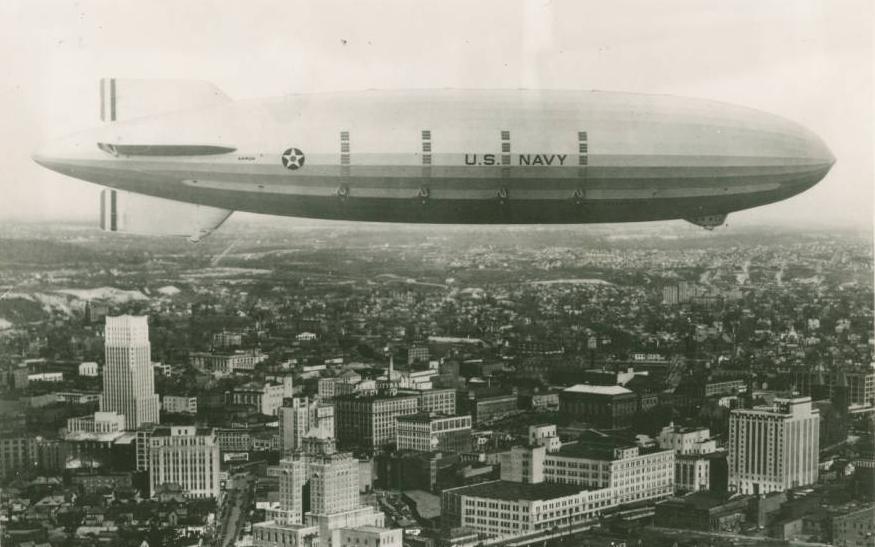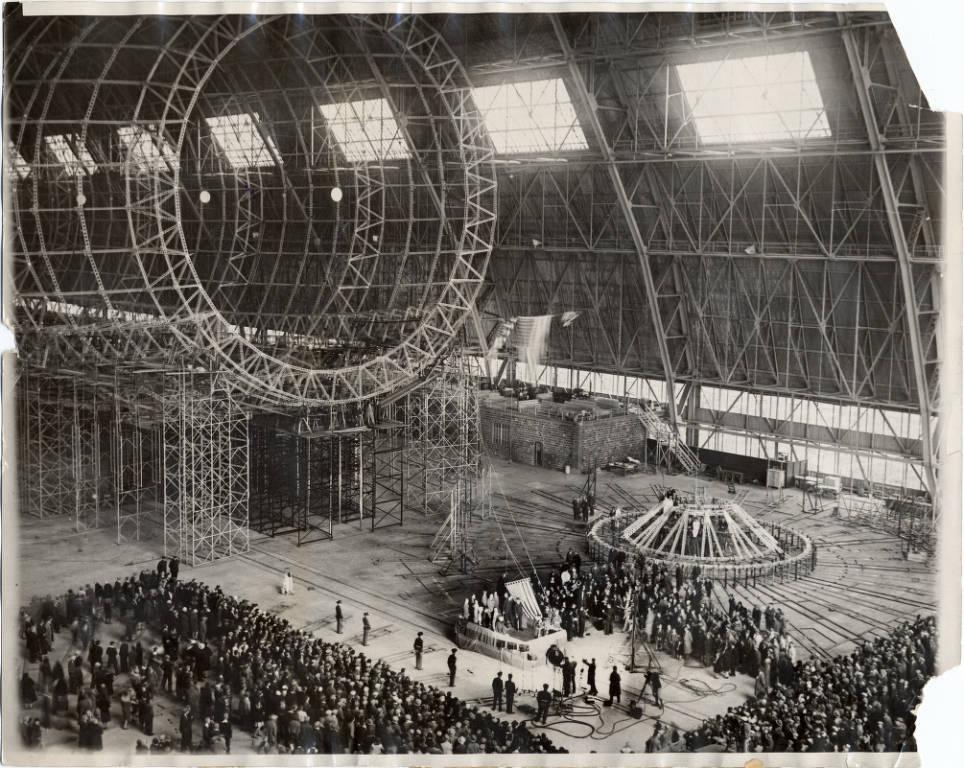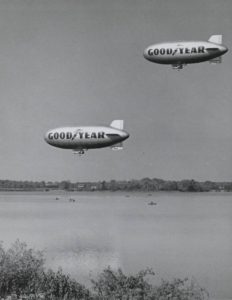USS Akron and the Rise, Fall and Rise of Airships

On this day in 1931, the U.S. Navy airship the USS Akron took its first flight. The Akron is remembered as the first rigid, lighter-than-air ship made in Ohio, and it would become even more famous less than two years later when it was destroyed in the worst airship disaster in the world’s history.

By the 1910s, Akron, Ohio, had become the center of zeppelin construction in the United States. Zeppelins, a type of airship also called dirigibles or blimps, rely on hydrogen or helium to become airborne, and feature an engine for steering, unlike a hot air balloon. The Akron was constructed in the Goodyear Air Dock, which was built on 60 acres of land set aside by the city of Akron when the Goodyear Zeppelin Company (a subsidiary of Goodyear Tire and Rubber) received a U.S. Navy contract to build a hangar large enough to accommodate the manufacture of two military airships. At the time, the Goodyear Air Dock was the largest building in the world without interior supports, with a floor area equal to 8.5 acres. The Akron had eight propellers, each powered by a 560 horsepower engine, and was meant to be used for long-range scouting as well as for launching biplanes while in flight near enemy territory. Its structure was based on a “deep ring” design which made the ship heavier but more durable — partly in response to the recent crash of the USS Shenandoah in Noble County, Ohio.

Following its first flight on September 23, 1931, the Akron underwent a month’s worth of test flights and was commissioned that October. Throughout 1932, it demonstrated impressive range but was plagued by poor performance on scouting exercises. It was on a routine calibration mission along the Atlantic coast in early April 1933 that the ship was caught in a storm, and during a struggle against powerful wind gusts, its lower tail fin was torn off in the water and the ship crashed into the ocean off the coast of New Jersey. 73 of the 76 men on board were killed, many perishing in the water following the crash as the ship was not equipped with life jackets or rafts. This was more than twice the death toll of the Hindenberg explosion that would occur several years later in 1937.
Despite the tragic end to the Akron, and a similar loss of its sister ship the USS Macon (also constructed in the Goodyear hangar) two years later, the Goodyear Zeppelin Company continued its work. During World War II, the company manufactured 104 airships for the military at its Akron facility, and following the war, manufactured airships as well as other types of aircraft and aircraft parts. Zeppelins transitioned to being used almost exclusively for advertising purposes, and in 1966, the firm created the “Skytacular,” a four-color sign that could be flown from blimps and read especially at night by people on the ground. Beginning in the 1950s and continuing today, Goodyear blimps can often be seen at major sporting events and remain a familiar sight to many Ohioans.
Thanks to Lily Birkhimer, Digital Projects Coordinator at the Ohio History Connection, for this week’s post!



Leave a Reply
You must be logged in to post a comment.